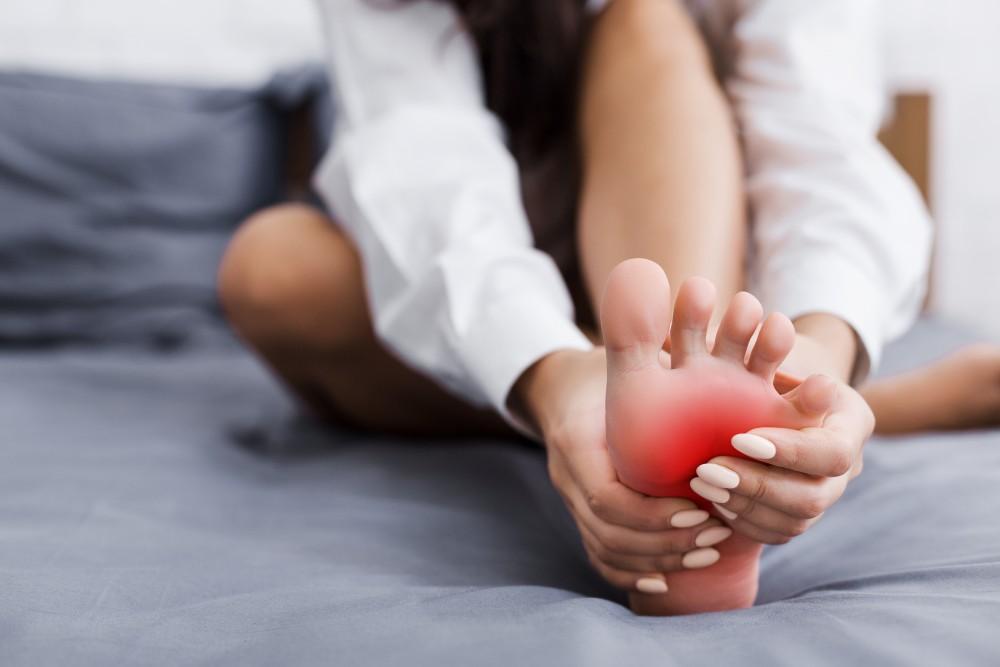
3 Tips to Keep Your Toenail Fungus From Spreading to Your Partner

Toenail fungus causes embarrassment, and often people are so self-conscious about it that they wouldn’t be caught in a pair of sandals for anything.
Symptoms of this type of fungal infection include thick, flaking, or discolored toenails. You might also notice what looks like material under your nail, and it may even feel loose.
Fortunately, effective treatments for toenail fungus are available through the talented and attentive podiatry team at Premier Foot & Ankle. If you have toenail fungus, you aren’t alone — the problem is thought to impact up to 14% of the population.
Toenail fungus doesn’t just affect you
Are you aware that toenail fungus can be spread from person to person, in addition to picking it up in locker rooms and from wearing sweaty socks and ill-fitting shoes?
It’s true, but there are steps you can take to keep the person most important to you and with whom you have the closest contact — your significant other — safe from catching your toenail fungus.
Toenail fungus can spread easily, and it’s a nuisance to get rid of. That’s why keeping these top tips in mind can reduce the chances that your partner will be affected by the dreaded fungus.
1. Don’t share foot tools
Most of us think of sharing as a positive act of kindness, but one of the things you should never share with your partner is your foot care instruments.
Each of you should have and use your own separate toenail clippers, scissors, and other tools, so there’s no chance a contaminated item will be to blame for your partner getting a case of fungal nails.
The same goes for shoes and socks. Wear only your own and keep your towels separate as well since the fungus can spread via that route too — especially if someone uses a soggy towel that’s been sitting around for a bit or it’s been used by someone else.
2. Keep your feet and toes covered
Protect your partner from being exposed to fungus by covering your feet at night. If you wear socks to bed, there’s no chance your bare feet will make contact with theirs. Bonus: You’ll never have cold feet!
You should wear socks or socks and shoes around the house too, and don flip-flops when you take a shower, which eliminates the chance that your partner could pick up toenail fungus that way.
3. Good housekeeping
Become better friends with your laundry room if you want to save your partner from a toenail fungal infection. Since fungi love things like drippy towels, wash your towels often and change them out after each use. Ditto for your bedsheets — it’s best to change them weekly.
Think of it this way: By depriving fungus of opportunities to multiply, you’re showing your partner just how much you love them!
To stop the spread of toenail fungus, be sure to treat it
Be aware if your partner is naturally at higher risk for getting fungal nails. If they’re older, have a compromised immune system, or have circulation problems, try to do all you can to protect them from stubborn fungus if you’re dealing with it.
If you haven’t gotten your toenail fungus treated, it’s time, and doing so is a kindness you can offer your partner as well. The Premier Foot & Ankle team offers effective treatments to banish fungus, including thinning and trimming your affected nails in our office, recommending antifungal soap, and prescribing both topical and oral medications.
We also offer an innovative laser treatment, Hyperion HyperBlue 1530®, which uses light waves to penetrate deep within your toenail until it reaches the fungus in your nail bed and exterminates it.
This approach is popular with our patients because in addition to being successful at zapping toenail fungus, treatment sessions are brief — only about 10 minutes — and they’re completely comfortable.
In serious cases or instances where the fungus repeatedly returns, we can surgically remove your nail if necessary.
It’s wonderful to share memories and dreams for the future with your partner, but it’s definitely not good to share your toenail fungus! We have five convenient Texas locations of Premier Foot & Ankle to serve you. Call today or book an appointment online anytime.
You Might Also Enjoy...


Lapiplasty: How 3D Bunion Correction Works

How to Get to the Root of Your Chronic Heel Pain

5 Ways to Care for Your Athletic Feet This Year

How to Keep Toenail Fungus From Spreading


